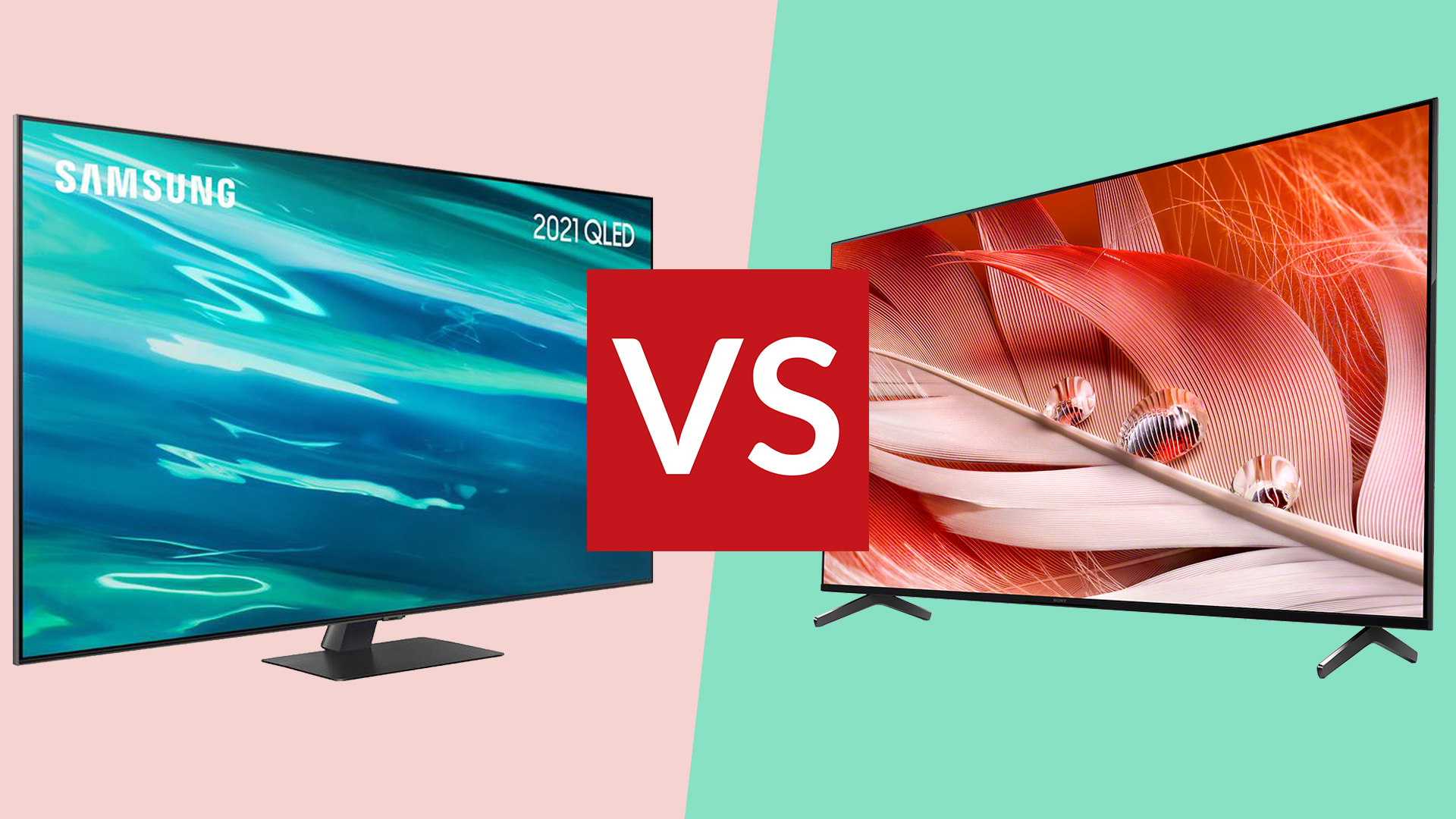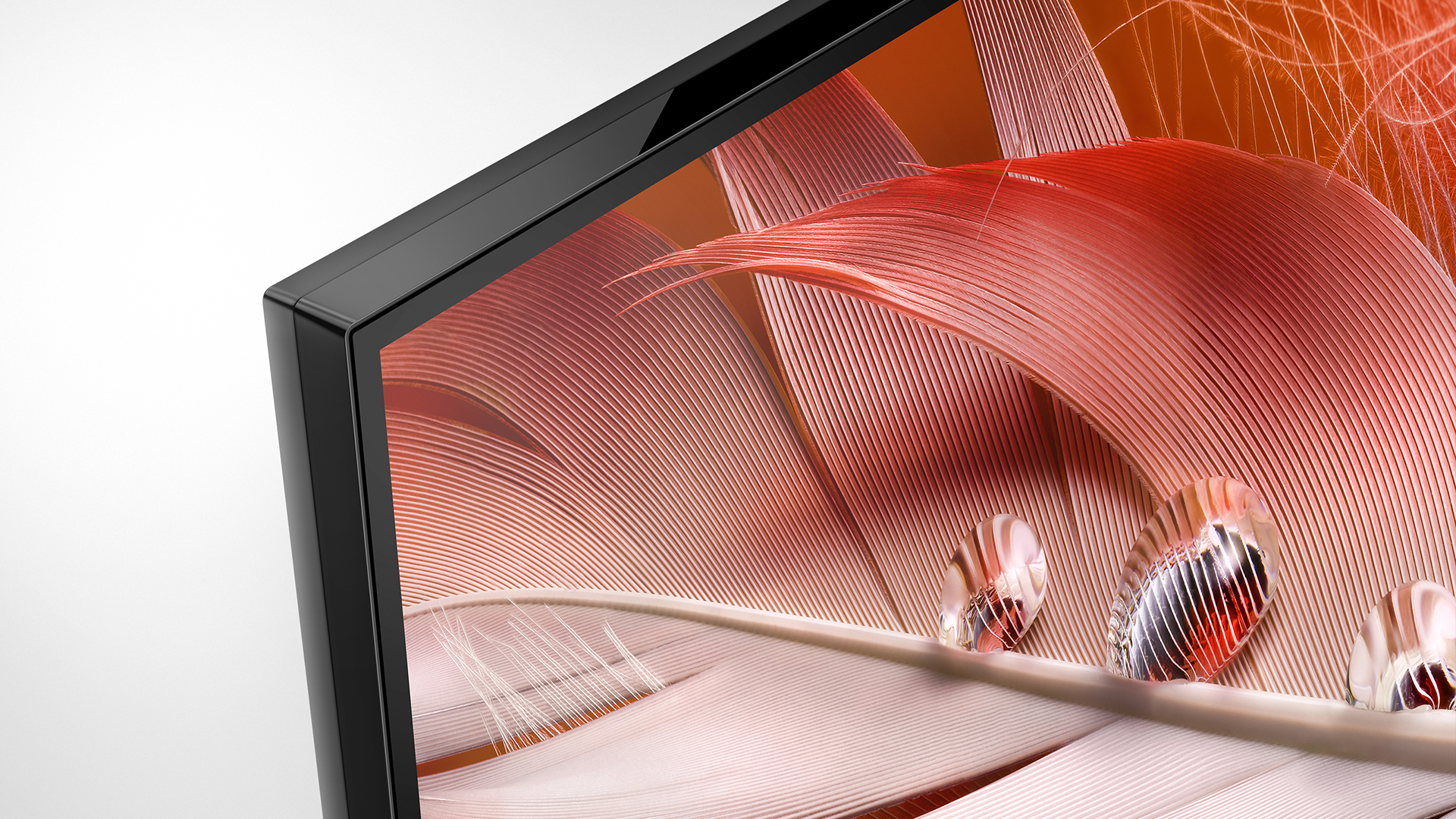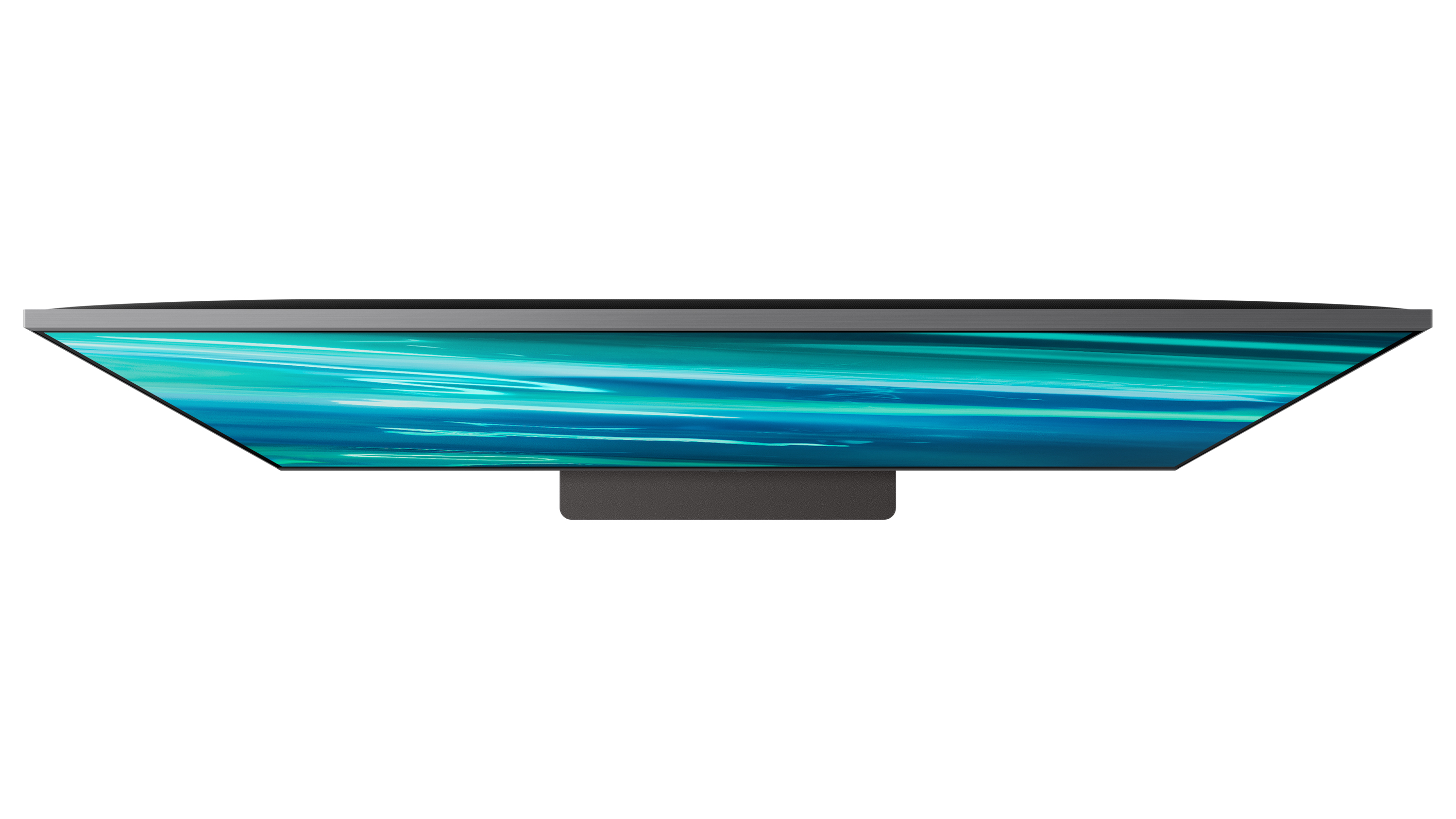
If you're looking for a mid-range 4K TV that comes with high-end features and big picture quality, two of 2021's most tempting sets will be the Samsung Q80A and the Sony X90J.
The Sony Bravia XR X90J is Sony’s mainstream hero LED TV. Available in four screen sizes, starting at 50 inches, it’s a well-equipped 4K HDR flatscreen with full array backlight for excellent contrast, and slim good looks.
The Samsung Q80A is a worthy opponent. It’s also a direct-lit full array model, available in various screen sizes depending on region. Like its Sony rival, it employs AI processing for sharper, more naturalistic images, and boasts an immersive audio system made of multiple speakers around the screen.
Both of these sets are designed to be slightly higher than budget models, but much more affordable than the very expensive models that top our guide to the best TVs. They're especially good value if you're looking at larger sizes – for example, these are absolutely two of the best 75-inch TVs, because they have high-end image processing to make things look great at a large size where imperfections would become clear… but they're not hideously priced.
They're both great at all sizes, though, and in every respect they’re closely matched. Let’s compare and contrast so you can see which might suit you better…
Samsung Q80A vs Sony X90J: Price & sizes
In the UK, the Samsung takes an early lead with lower prices than the Sony across all screen sizes, but the in the US and Australia the tables are turned, and its Sony who takes the pricing lead.
The Q80A is available in the UK in 50-, 55-, 65-, and 75-inch models (QE50Q80A, QE55Q80A, QE65Q80A, QE75Q80A), priced £1,099, £1,099, £1,699 and £2,299 respectively.
Get all the latest news, reviews, deals and buying guides on gorgeous tech, home and active products from the T3 experts
In the US, the Q80A range is available in 50-, 55-, 60-, 65-, 75- and 85-inch sizes (QN50Q80A, QN55Q80A, QN565Q80A, QN75Q80A, QN85Q80A,). These sell for $1,149, $1,249, $1,399, $2,699, $2,999.
In Australia, the Q80A is only available in two sizes: 55- and 65-inches, (QA55Q80A QA65Q80A, priced AU$2,349 and AU$2,749.
The more pricey Sony Bravia XR X90J range comprises 50-, 55-, 65- and 75-inch models (XR-50X90J, XR-55X90J, XR-65X90J, XR-75X90J), priced at £1,249, £1,399, £1,799, and £2,599 respectively.
In Australia the same screen sizes are priced AU$1,795, AU$1,995, AU$2,495, and AU$3,695.
The US X90J is also available in 50-, 55-, 65- and 75-inch screen sizes, priced at $1,099, $1,199, $1,399 and $2,099 respectively, so Sony takes the lear here.
You can find the current lowest prices for all models here, since discounts are already making these prices fluctuate.
Samsung Q80A vs Sony X90J: Design and connectivity
The Sony X90J is a good-looking television, with an ultra-slim faux metal bezel. Oddly, stand options vary according to screen size. From 55-inches up, the TV comes with adjustable feet: you can opt to place these centrally or to the edge. Take the smaller 50-inch set home, though, and the feet are fixed wide.
The Samsung is comparably neat, but comes with a more conventional centre pedestal stand.
Sony wins when it comes to connectivity. It has four HDMI inputs, one of which is eARC enabled. Crucially, two of this HDMI quartet are 4K 120fps ready for PlayStation 5 and Xbox Series X. There is also support promised for Variable Refresh Rate and Auto Low Latency compliance in the future, via an update.
Other connections include two USBs, Ethernet, a digital optical output, Wi-Fi and Bluetooth.
The Samsung Q80A also comes with four HDMIs, but only one is HDMI 2.1 and supports 4K 120fps. There’s also eARC, ALLM and FreeSync VRR on hand. Other connections include a digital optical audio output, and two USB ports, plus Ethernet, Wi-Fi and Bluetooth.
The Sony X90J has a single, standard issue remote control. The Samsung Q80A ships with a new-style solar-powered remote.

The Sony X90J features a sharp-looking frame.
Samsung Q80A vs Sony X90J: Picture & sound
Both the X90J and Q80A are full-array backlit LED models, able to deliver high average brightness and strong HDR performance. AI picture processing is a key ingredient in both picture processors.
The X90J uses the new Sony Cognitive Processor XR processor, said to bring a human-like interpretation to AI-driven image analysis. XR Dynamic Contrast Enhancer and XR HDR Remaster technology are also on hand to give regular SDR content a boost in colours and contrast so they're closer to HDR, and Sony is a leader at this.
However, the X90J lacks X-Wide Angle technology, found higher up in Sony's range, which means it drops colour and contrast when not viewed pretty straight on – not a problem in some cases, but could be annoying in a family room where people are spread around.
Unlike the Samsung Q80A, there’s support for Dolby Vision HDR (plus regular HDR10 and HLG), plus a Netflix Calibrated viewing mode with IMAX Enhanced certification.
The QLED Q80A is built-around Samsung’s Quantum Processor 4K. It uses a Quantum Dot colour filter for superior colour fidelity, and employs standard local dimming.
However, there’s no support for Dolby Vision – a long-standing bugbear with Samsung’s TVs – instead it throws its weight behind HDR10+, which is considerably less well-supported by actual movies and TV shows.
It does boast Wide Viewing Angle technology though, improving off axis viewing; positioning isn’t as critical as it is with the Sony X90J.
When it comes to audio, both the Sony and Samsung sets go one step beyond.
The X90J features an Acoustic Multi Audio system which comprises two downward facing speakers, plus two sound positioning tweeters. Power output is rated at 2x10W.
The Q80A counters with OTS (Object Tracking Sound) Lite. Digital processing is used to give the impression that the screen’s audio system is actually coming forward from the panel rather than down-firing.
Couple the Q80A to soundbar that supports Samsung's Q Symphony feature (you'll find some here in our guide to the best soundbars for Samsung TVs) and you’ll also benefit from an orchestrated sound system that combines the speakers in the soundbar with those in the TV for a larger soundstage.
The Sony X90J is fully Dolby Atmos compatible, piping out high-quality audio to a soundbar over HDMI eARC. The Samsung doesn't decode Dolby Atmos – it can pass Atmos audio over HDMI to a compatible soundbar if you're watching something with an Atmos soundtrack from its built-in apps, though.

The Samsung Q80A is well-made and a bit of a looker.
Samsung Q80A vs Sony X90J: Smart platform
Samsung gets a tick in the win column when it comes to smart functionality, particularly if you’re big into smart home gadgets.
The X90J is more home-cinema orientated, and runs Google TV, a more user-friendly update to the Android TV OS. It has plenty of streaming options, including Netflix, Amazon Prime Video and Disney+.
Sony also offers Bravia Core, a high-quality movie streaming service. This offers a variety of free-to-watch classic and recent movies from the Sony Pictures archive, with the option to pay for newer titles. Bravia Core uses high-bitrate Pure Stream technology to achieve close to UHD Blu-ray quality. Google Chromecast is built in, and there’s Amazon Alexa and Siri on-board, plus Apple AirPlay 2.
The Q80A is built on Samsung’s own Tizen smart platform. It’s similarly well served with apps and smart features, with a full selection of apps and catch-up services, including all the big names. It also throws in control support for Samsung SmartThings smart home devices, though, which is a good range of .
When it comes to digital assistants, you've got Amazon Alexa and Google Assistant on the Samsung. There’s even a Smart Trainer feature designed to assist home workouts and monitor your stats.
Samsung Q80A vs Sony X90J: Verdict
The Samsung Q80A and X90J are closely matched, but subtle differences should help you decide which is your better buy.
Home cinema fans will appreciate that Sony offers Dolby Vision on the XR X90J, alongside IMAX Enhanced certification. It also has a highly effective XR Contrast booster, although the lack of X-Wide Angle technology is disappointing (but isn't an issue if you only ever watch it straight-on).
Samsung offers better off axis viewing for a family room, but has to concede on the connectivity front, offering only one futureproofed 4K 120Hz HDMI input, while Sony has two.
Movie fans and gamers will probably feel more at home with the Sony X90J overall, though if the Samsung remains cheaper, it certainly justifies itself at that price.
For over 25 years, Steve has been casting his keen eyes and ears over the best that the world of TV and audio has to offer. He was the creator of Home Cinema Choice magazine, and contributes to huge range of technology, home and music titles along with T3, including TechRadar, Louder, Ideal Home, the i newspaper, and more.

